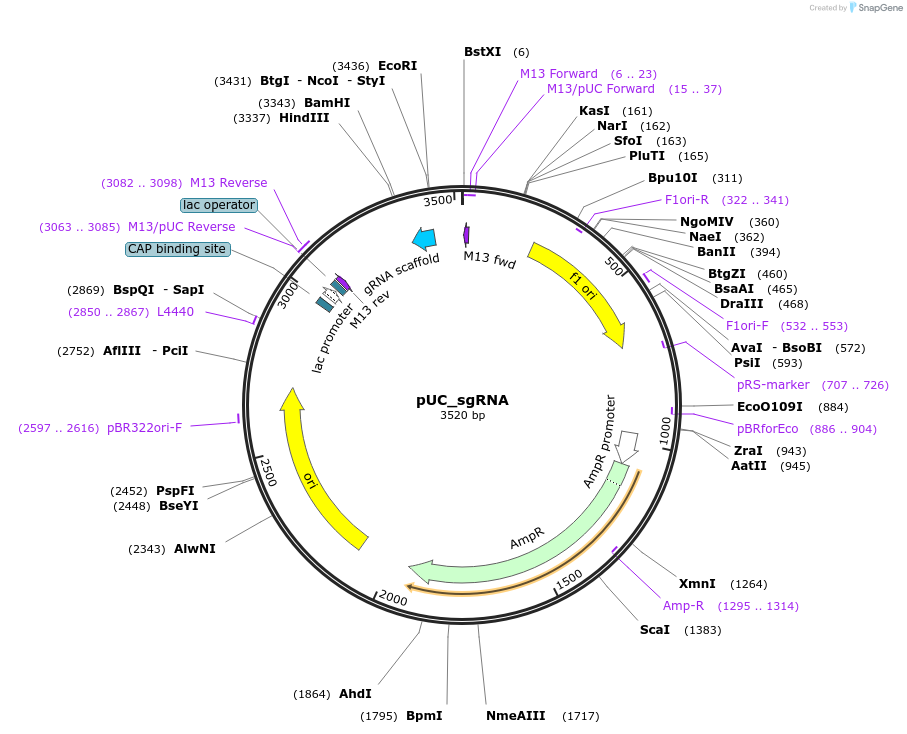pUC_sgRNA
(Plasmid
#68710)
-
Purpose(Empty Backbone) Contains the sgRNA backbone sequence (tracrRNA, 82 bp) and is used as DNA template to amplify a specific sgRNA using a forward primer with the protospacer sequence for gene targeting.
-
Depositing Lab
-
Sequence Information
Ordering
| Item | Catalog # | Description | Quantity | Price (USD) | |
|---|---|---|---|---|---|
| Plasmid | 68710 | Standard format: Plasmid sent in bacteria as agar stab | 1 | $89 * | |
* Log in to view industry pricing.
Backbone
-
Vector backbonepUCAmp
-
Backbone manufacturerBlue Heron
- Backbone size (bp) 3150
-
Modifications to backbonetracrRNA sequence (82 bp) was custom-made synthesized by Blue Heron and inserted into the cloning site of pUCAmp vector
-
Vector typeCRISPR, Synthetic Biology
Growth in Bacteria
-
Bacterial Resistance(s)Ampicillin, 100 μg/mL
-
Growth Temperature37°C
-
Growth Strain(s)DH5alpha
-
Copy numberHigh Copy
Cloning Information
- Cloning method Unknown
- 5′ sequencing primer M13_forward20_primer and M13_pUC_fwd_primer
- 3′ sequencing primer M13_reverse_primer and M13_pUC_rev_primer
- (Common Sequencing Primers)
Resource Information
-
Supplemental Documents
-
A portion of this plasmid was derived from a plasmid made byWe purchased this custom-made plasmid from Blue Heron Biotech, LLC (Bothell, WA 98021 USA)
-
Articles Citing this Plasmid
Terms and Licenses
-
Academic/Nonprofit Terms
-
Industry Terms
Trademarks:
- Zeocin® is an InvivoGen trademark.
These plasmids were created by your colleagues. Please acknowledge the Principal Investigator, cite the article in which the plasmids were described, and include Addgene in the Materials and Methods of your future publications.
-
For your Materials & Methods section:
pUC_sgRNA was a gift from Roberto Docampo (Addgene plasmid # 68710 ; http://n2t.net/addgene:68710 ; RRID:Addgene_68710) -
For your References section:
CRISPR/Cas9-Induced Disruption of Paraflagellar Rod Protein 1 and 2 Genes in Trypanosoma cruzi Reveals Their Role in Flagellar Attachment. Lander N, Li ZH, Niyogi S, Docampo R. MBio. 2015 Jul 21;6(4). pii: e01012-15. doi: 10.1128/mBio.01012-15. 10.1128/mBio.01012-15 PubMed 26199333



